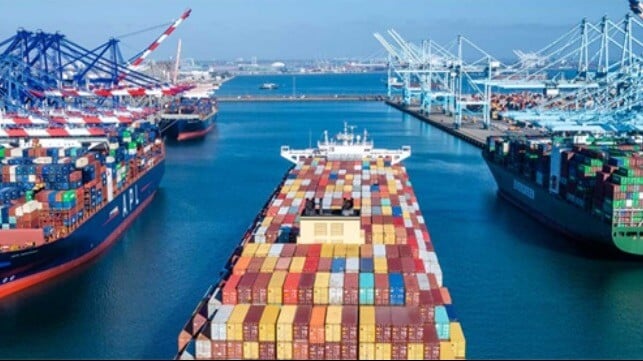China Increases Response to USTR Fees With Sanctions on Hanwha US Ops

The Chinese government has increased its response as the first day of port fees came into effect in both China and the United States. Among the moves were sanctions leveled at the U.S. assets of Hanwha as the first company targeted for aiding the U.S.’s efforts.
The United States and China each began collecting their port fees linked to the other country’s shipping and shipbuilding industries as the programs became embroiled in the broader trade war between the countries. China continues to lash out at the U.S., saying it is taking steps that harm China’s national interests and trade.
After announcing reciprocal port fees, China provided some further details on the program. In addition to targeting U.S.-built or flagged ships, China will impose the fees on companies that have 25 percent investment from the United States, which could potentially make the program far more wide-reaching. However, as it issued follow-up details, it said all Chinese-built ships are excluded, as are vessels arriving in ballast to go to a Chinese shipyard for repairs.
In addition to a blistering media campaign against the U.S. program, China’s Ministry of Commerce announced that it would bar Chinese companies from doing business with five of Hanwha’s U.S. subsidiaries. It accused the Korean company of having assisted the U.S. in its port fee initiative while saying the ministry was investigating the overall program and its impact on Chinese commerce. It said there could be further responses.
The sanctions were imposed against Hanwha Philly Shipyard, Hanwha Shipping, Hanwha Ocean USA International, Hanwha Shipping Holdings, and HS USA Holdings. Hanwha, earlier this year, revealed its plans to get into the shipping business by building tankers and LNG carriers that it will flag in the United States for international trade. The company has been working to build its U.S. shipbuilding operations and, in South Korea, started the first MRO contracts for U.S. Navy auxiliary vessels and committed to the Make American Shipbuilding Great Again initiative.
Analysts highlight that the sanctions will block Hanwha’s access to Chinese suppliers for components and equipment. Reuters also reports that the company, which acquired the former Daewoo Shipbuilding & Marine Engineering, has operations in China that build blocks for the shipyards.
Today’s announcement of the investigation into the USTR program and the sanctions against Hanwha are seen as another element in the broader trade war. Last week, China suddenly announced new limitations on the exports of rare earth minerals. The Chinese letters sent out to countries angered the Trump administration, which immediately fired back, announcing a new 100 percent tariff on Chinese goods and import restrictions on Chinese software.
The USTR also announced on October 10 plans to add further tariffs on Chinese-made port equipment. The program has already targeted Chinese container cranes with tariffs and would now add increased fees on gantry cranes and other port equipment made in China.
Donald Trump and China’s President Xi Jinping are scheduled to meet later this month on the sidelines of an Asian conference. Observers have questioned whether the meeting will proceed, but China said working-level talks were still ongoing. It also called for the U.S. to take steps toward co-operation, as it said the broader trade talks were also proceeding. In August, Donald Trump paused the implementation of tariffs on Chinese goods till November 10, reporting that they had a framework and were making good progress on a trade agreement.
